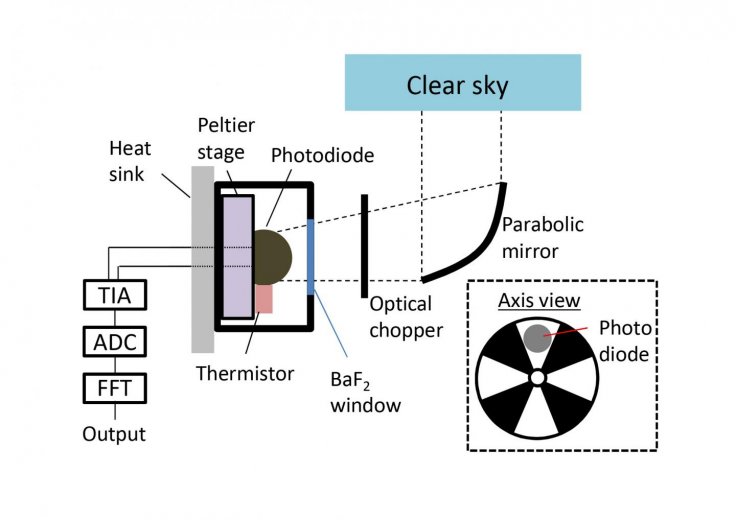It is now possible to generate a measurable amount of electricity in a diode directly from the cold temperatures of the universe, a new study has shown. An international team of scientists has created a potential path to generate electricity (like solar cells) that can power electronics at night.
Solar panels require sunlight to generate electricity. But in this model, an infrared semiconductor device faces the sky and uses the temperature difference between Earth and space to produce the electricity.
Unlike using incoming energy as a normal solar cell would, the negative illumination effect allows electrical energy to be harvested as heat leaves a surface. Present technology does not make use of these negative temperature differences.
Shanhui Fan, author of the paper, said the vastness of the universe is a thermodynamic resource. "In terms of optoelectronic physics, there is really this very beautiful symmetry between harvesting incoming radiation and harvesting outgoing radiation."
Optoelectronics is the branch of technology which uses electronics and light together.

The group found that their negative illumination diode generated about 64 nanowatts per square meter, a tiny amount of electricity, but an important proof of concept, that the authors can improve on by enhancing the quantum optoelectronic properties of the materials they use.
Upon pointing this device towards space, the group found a great enough temperature difference to generate power through an early design. They harnessed the energy from the temperature of space, which is mere degrees from absolute zero.
Masashi Ono, another author said, "The amount of power that we can generate with this experiment, at the moment, is far below what the theoretical limit is".
Upon further calculations, they discovered that when atmospheric effects are considered, the current device can (theoretically) generate almost 4 watts per square meter. This is roughly one million times what the group's device generated and enough to help power machinery that is required to run at night.
In comparision, modern solar panels generate 100 to 200 watts per square meter.
Fan said the same principle could be used to recover waste heat from machines, which makes it a renewable source. Hence, energy wastage can be minimized. Since the source of this energy is nearly limitless, harnessing it will produce energy at a constant pace, with very little risk of exhausting the source.
This study was published in the latest issue of Applied Physics Letters from AIP (American Institute of Physics) Publishing.









